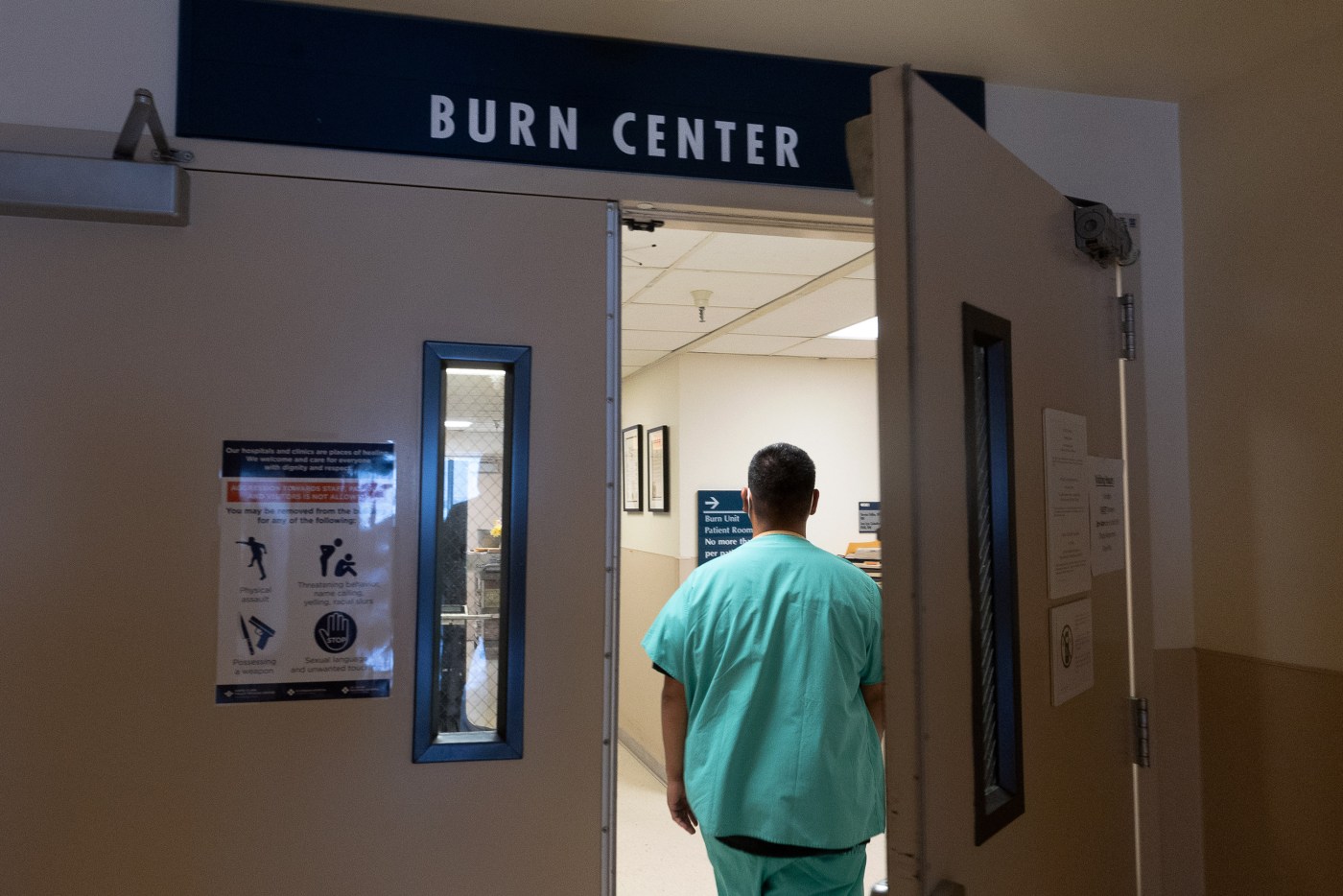
Santa Clara County has already started to feel the impacts of President Donald Trump’s budget bill — to the tune of $223 million this fiscal year as a result of lost federal revenues from Medicaid.
It’s the first wave of what is expected to be several rocky years financially for a county that operates four public hospitals and 15 clinics in the wake of Republicans’ decision to slash $1 trillion from the federal Medicaid program over the next decade. In Santa Clara County, one in four residents rely on the publicly funded health insurance program for low-income and disabled individuals, which is known as Medi-Cal in California.
While new work requirements that determine eligibility won’t take effect until December 2026 — a change that could result in several million state residents losing health care coverage — County Executive James Williams said the county immediately felt the impact of the bill via cuts and freezes to several Medicaid-related revenue streams.
Related Articles
As heat gets more extreme, pregnant farmworkers are increasingly at risk
Protect your health and your wealth: 5 tips to beat medical debt
Health care compromise appears far off as the government shutdown stalemate persists
New report ranks Bay Area children’s hospitals among the best
Opinion: Politicians seem incapable of balancing the federal budget
Some of these payments helped bridge the gap between the actual cost of providing health care services and Medicaid reimbursement rates. Williams said that dollars from these types of supplemental payment programs flow to hospital systems like the Santa Clara Valley Healthcare System that disproportionately serve a large percentage of Medi-Cal enrollees.
Because of the immediate lost revenue, cuts are already on the table for the current fiscal year, which ends in June 2026. County officials are currently trying to come up ways to find $200 million in cost savings in the health care system, which will be approved by the Board of Supervisors in February during the mid-year budget review. Williams said it’s the most significant adjustment the county has had to make mid-year in over a decade.
“The magnitude of what we’re facing is quite large, and we don’t think it’s prudent fiscally to wait,” the county executive told The Mercury News. “We need to move forward with at least an initial piece of action now given we’re facing hundreds of millions more during the upcoming budget process.”
The impacts of Trump’s bill are expected to get worse as the years go on, Williams said, with the county estimating $506 million in lost Medicaid revenues in the 2026-2027 fiscal year.
It’s unclear where exactly the $200 million in spending reductions to the Santa Clara Valley Healthcare system will occur, but county officials have hinted in recent weeks that they’re looking at redundancies throughout the system.
While Regional Medical Center in East San Jose — a hospital that recently came into the county fold earlier this year — reopened labor and delivery services on Oct. 20 following a five-year absence, the county had to make a trade-off by closing O’Connor Hospital’s maternity ward.
Paul Lorenz, the CEO of Santa Clara Valley Healthcare, said at a recent meeting that it was a decision based on data that “suggested that we can do better at serving our community” by shifting those services to Regional Medical Center. In the last five years, more than half of the births at O’Connor Hospital were by women living in East San Jose, according to county officials.
The restructuring of services will be felt by residents, Lorenz said.
“There will be longer wait times, and implications that we may feel immediately but many of which we will not encounter or experience until six months or a year from now,” he said.
Some of the budget impacts, though, may be stemmed if voters decide on Nov. 4 to approve Measure A — a sales tax increase that is expected to backfill some of the cuts to Medicaid. For the current fiscal year, the measure could generate $83 million, according to county estimates, leaving the federal revenue loss gap at $139 million. For a full fiscal year, the measure is estimated to generate $330 million.
Board of Supervisors President Otto Lee said in a statement that he’s worried that services like the recently reopened labor and delivery ward at Regional Medical Center could be in danger.
“We have worked incredibly hard over the past few years to protect many of our services at risk of being cut, including behavioral health, substance abuse treatment services and programs for people experiencing homelessness within our community,” Lee said. “These cuts will inevitably impact our ability to continue to make progress in these areas.”
Supervisor Margaret Abe-Koga said that the county has already targeted the “low-hanging fruit” in the last few years as budget challenges mounted — cutting vacant positions and freezing hiring. Now, she said, is the time for the county to “dive deep” into the budget, examine their priorities, find new ways to generate revenues and establish a rainy day fund for the next crisis.
“I do look at the opportunity to provide efficiencies in the work that we’re doing,” she said in an interview. “That’s something I’m committed to doing, to do right with our residents and making sure that every dollar is stretched.”
For Supervisor Susan Ellenberg, the size of the budget gap in the coming years isn’t something they can solve just by operating more efficiently — they’re likely going to have to cut programs that “are actually working and having a positive impact on people,” but aren’t services the county is required to provide.
“We are innovative, we’re progressive, we’re often first in the state on new programs and others follow us,” she said. “Having to dial back to just the mandated work, I think, represents really a low point in the history of our county government.”